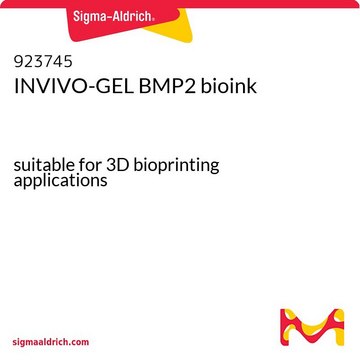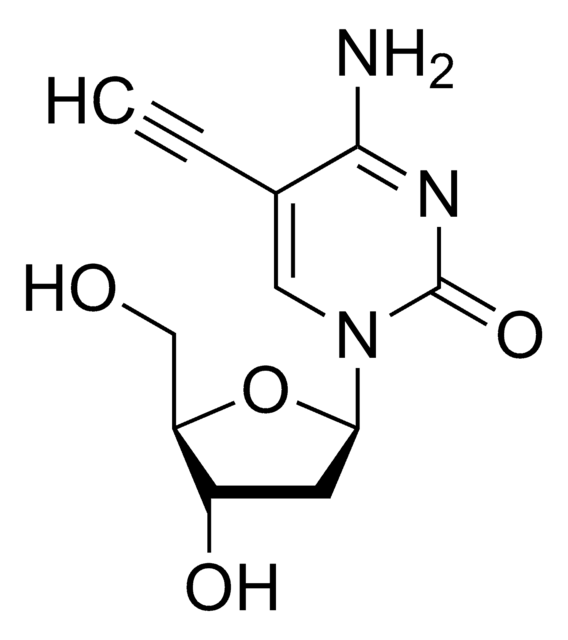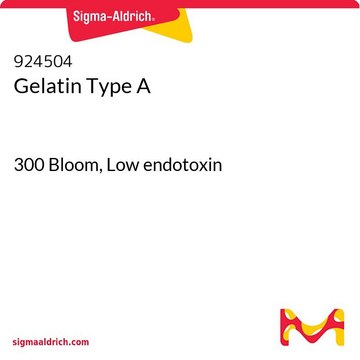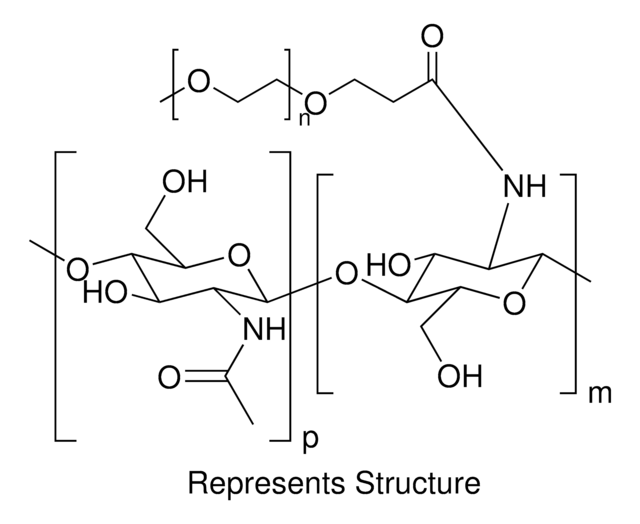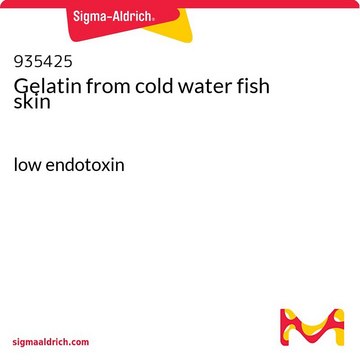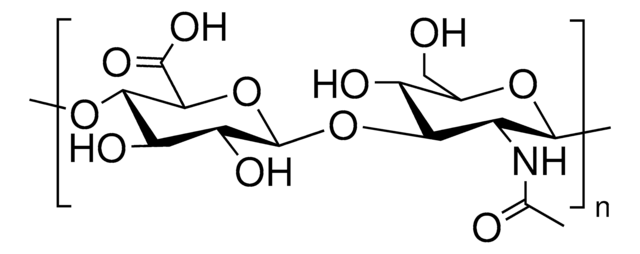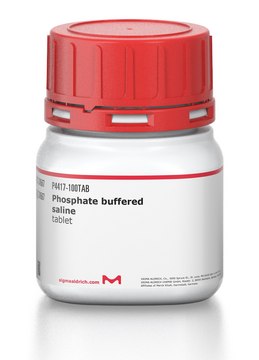推荐产品
质量水平
无菌性
sterile; sterile-filtered
表单
viscous liquid
浓度
30-40 mg/mL (Collagen concentration)
35 mg/mL
杂质
≤10 EU/mL Endotoxin
颜色
colorless
pH值(酸碱度)
3.0-5.0
储存温度
2-8°C
应用
Lifeink® 240 is a collagen based bioink that is suitable for 3D bioprinting using the FRESH printing technique. The recommended printing temperature is at 2-25 °C. It is a an acidic Type I collagen bioink at a concentration of 35 mg/ml. Lifeink® 240 is formulated in an acidic saline buffer solution. Once the collagen is printed into LifeSupport™, the pH and salts concentration of the printed structure become physiological. Cells can then be seeded onto the printed structure allowing for cell adherence and cellular remodeling of the 3D bioprinted structure. This bioink possesses high print fidelity, shear-thinning, strong mechanical strength, and good cytocompatibility.
法律信息
LifeSupport is a trademark of Advanced BioMatrix, Inc.
Lifeink is a registered trademark of Advanced BioMatrix, Inc.
警示用语:
Warning
危险声明
预防措施声明
危险分类
Met. Corr. 1
储存分类代码
8A - Combustible corrosive hazardous materials
WGK
WGK 1
In vivo remodeling of a 3D-Bioprinted tissue engineered heart valve scaffold.
Maxson E L, et al.
Bioprinting, 16, e00059-e00059 (2019)
S Fox et al.
Biomedical materials (Bristol, England), 14(4), 041001-041001 (2019-02-23)
Human autologous bioengineered skin has been successfully developed and used to treat skin injuries in a growing number of cases. In current clinical studies, the biomaterial used is fabricated via plastic compression of collagen hydrogel to increase the density and
G Filardo et al.
Bone & joint research, 8(2), 101-106 (2019-03-28)
Meniscal injuries are often associated with an active lifestyle. The damage of meniscal tissue puts young patients at higher risk of undergoing meniscal surgery and, therefore, at higher risk of osteoarthritis. In this study, we undertook proof-of-concept research to develop
A Lee et al.
Science (New York, N.Y.), 365(6452), 482-487 (2019-08-03)
Collagen is the primary component of the extracellular matrix in the human body. It has proved challenging to fabricate collagen scaffolds capable of replicating the structure and function of tissues and organs. We present a method to 3D-bioprint collagen using
我们的科学家团队拥有各种研究领域经验,包括生命科学、材料科学、化学合成、色谱、分析及许多其他领域.
联系技术服务部门

